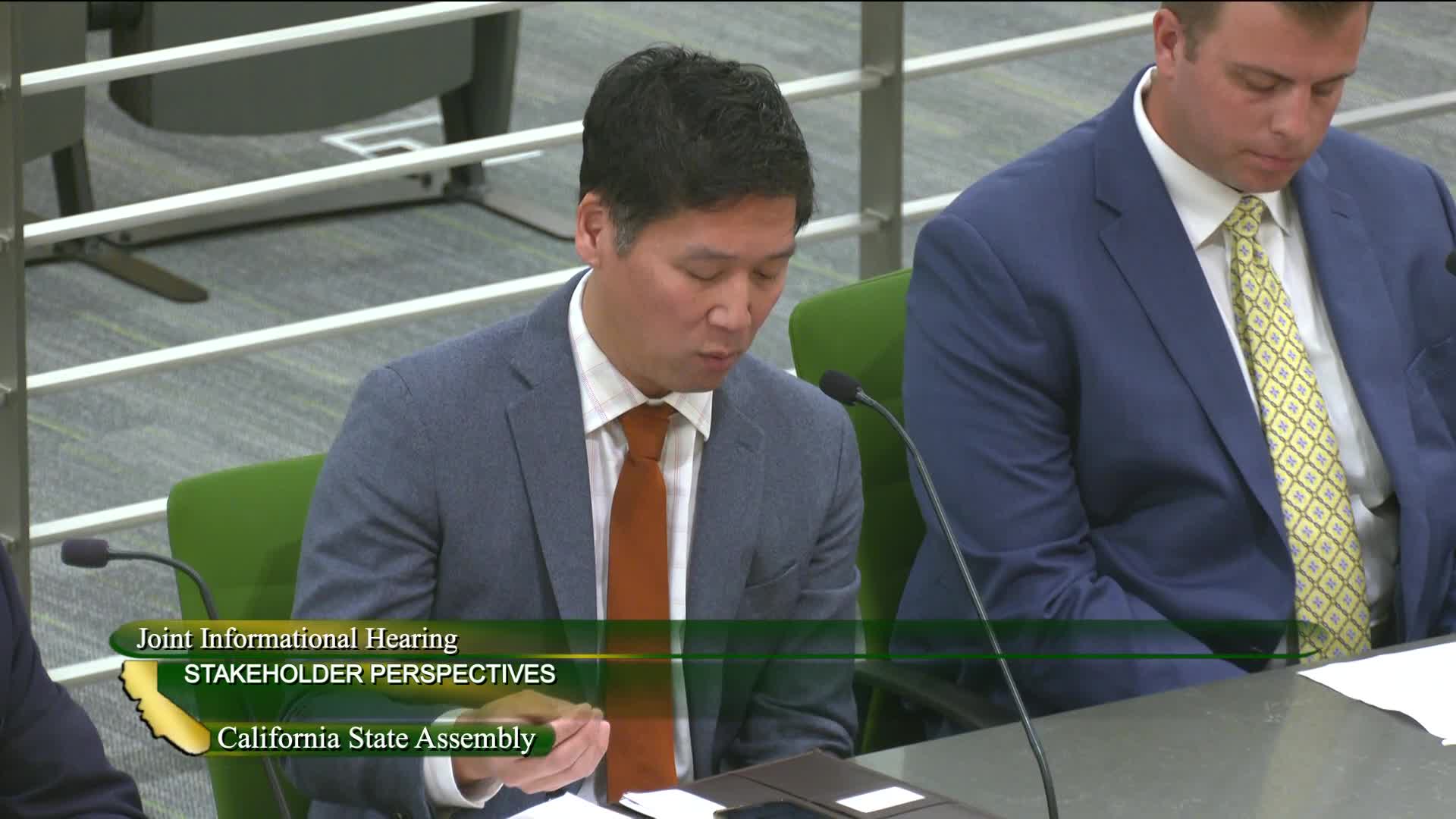Primary care physician advocates for equitable access to health AI tools in safety nets
May 28, 2025 | California State Assembly, House, Legislative, California
This article was created by AI summarizing key points discussed. AI makes mistakes, so for full details and context, please refer to the video of the full meeting. Please report any errors so we can fix them. Report an error »

In a recent assembly joint hearing held in California, the spotlight shone on the intersection of healthcare technology and equitable access, as experts voiced concerns about the implications of advanced tools like Generative AI in medical settings. The meeting, attended by members of the Health Committee and the Privacy and Consumer Protection Committee, underscored the urgent need to ensure that vulnerable populations are not left behind in the digital health revolution.
One primary care physician shared a personal narrative that highlighted both the benefits and challenges of integrating technology into healthcare. While advancements such as ambient scribe technology have significantly improved efficiency—allowing doctors to complete their documentation by the end of the day, thus freeing up time for family life—there remains a stark disparity in access to these tools. The physician pointed out that while their health system can afford the high costs associated with such technologies, many safety net and rural clinics cannot. With ambient scribe services averaging between $500 to $600 per provider each month, the financial burden poses a significant barrier to equitable healthcare delivery.
The discussion also delved into the potential risks associated with AI technologies. A poignant example was shared about a patient living with HIV, where an AI-generated transcript inaccurately linked the patient’s conversation about pine needles to intravenous drug use, demonstrating how biases in data can lead to harmful misinterpretations. This incident raised alarms about the importance of ensuring that AI systems are trained on representative data to avoid perpetuating stereotypes and inaccuracies.
Moreover, the need for comprehensive workforce training was emphasized. Many healthcare professionals may not possess the expertise to identify the shortcomings of AI tools, which could lead to unintended consequences in patient care. The physician stressed the necessity for support in training staff within safety net settings to effectively and safely utilize these technologies.
As the meeting concluded, the call for leadership in addressing these challenges resonated strongly. The discussions highlighted a critical juncture for California's healthcare system, where the integration of technology must be balanced with a commitment to equity and safety, ensuring that all patients, regardless of their background, receive the quality care they deserve. The path forward will require collaboration, innovation, and a steadfast focus on the needs of the most vulnerable populations.
One primary care physician shared a personal narrative that highlighted both the benefits and challenges of integrating technology into healthcare. While advancements such as ambient scribe technology have significantly improved efficiency—allowing doctors to complete their documentation by the end of the day, thus freeing up time for family life—there remains a stark disparity in access to these tools. The physician pointed out that while their health system can afford the high costs associated with such technologies, many safety net and rural clinics cannot. With ambient scribe services averaging between $500 to $600 per provider each month, the financial burden poses a significant barrier to equitable healthcare delivery.
The discussion also delved into the potential risks associated with AI technologies. A poignant example was shared about a patient living with HIV, where an AI-generated transcript inaccurately linked the patient’s conversation about pine needles to intravenous drug use, demonstrating how biases in data can lead to harmful misinterpretations. This incident raised alarms about the importance of ensuring that AI systems are trained on representative data to avoid perpetuating stereotypes and inaccuracies.
Moreover, the need for comprehensive workforce training was emphasized. Many healthcare professionals may not possess the expertise to identify the shortcomings of AI tools, which could lead to unintended consequences in patient care. The physician stressed the necessity for support in training staff within safety net settings to effectively and safely utilize these technologies.
As the meeting concluded, the call for leadership in addressing these challenges resonated strongly. The discussions highlighted a critical juncture for California's healthcare system, where the integration of technology must be balanced with a commitment to equity and safety, ensuring that all patients, regardless of their background, receive the quality care they deserve. The path forward will require collaboration, innovation, and a steadfast focus on the needs of the most vulnerable populations.
View full meeting
This article is based on a recent meeting—watch the full video and explore the complete transcript for deeper insights into the discussion.
View full meeting
